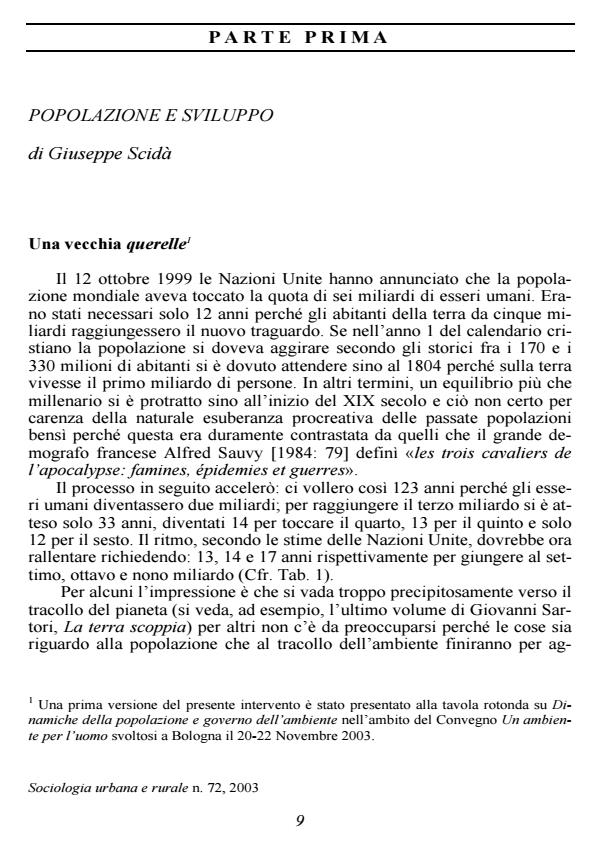Popolazione e sviluppo
Journal title SOCIOLOGIA URBANA E RURALE
Author/s Giuseppe Scidà
Publishing Year 2004 Issue 2003/72
Language Italian Pages 16 P. File size 160 KB
DOI
DOI is like a bar code for intellectual property: to have more infomation
click here
Below, you can see the article first page
If you want to buy this article in PDF format, you can do it, following the instructions to buy download credits

FrancoAngeli is member of Publishers International Linking Association, Inc (PILA), a not-for-profit association which run the CrossRef service enabling links to and from online scholarly content.
Is the demographic growth a mere consequence of the changing come from the first steps of the economic growth or is the population growth which makes development possible? Experts realize that the relation between development and population hasn’t yet become emancipated from the well-known querelle risen in the XVIIIth century in the days of Malthus and Condorcet and gone on in the debate after the industrial revolution in England. Some more, in a far-off 1974, the United Nations, on the occasion of the First World Conference on Population, didn’t go any farther a tactful and neutral comment: Demographic variables have an influence on development factors and vice versa. In more recent years, the same question has come up again. From one side, in the years 60s-80s, the strong economic growth in four small Asian countries (South Korea, Taiwan, Singapore, Hong Kong) knew a decrease of the demographic growth. On the other side, in the same period, both variables rose simultaneously in countries as Mexico or Ivory Coast. Anyway, it is a fact that a 60% of over 6 billion people in the world is now concentrated in Asia, particularly in China and India. From the analysis of the demographic policies of these countries with a strong economic growth, some new certainties rise as regards the ways of best discouraging the demographic growth. The most relevant ones are some policies promoting the human capital, particularly the feminine one, generally neglected in the past.
Giuseppe Scidà, Popolazione e sviluppo in "SOCIOLOGIA URBANA E RURALE" 72/2003, pp , DOI: